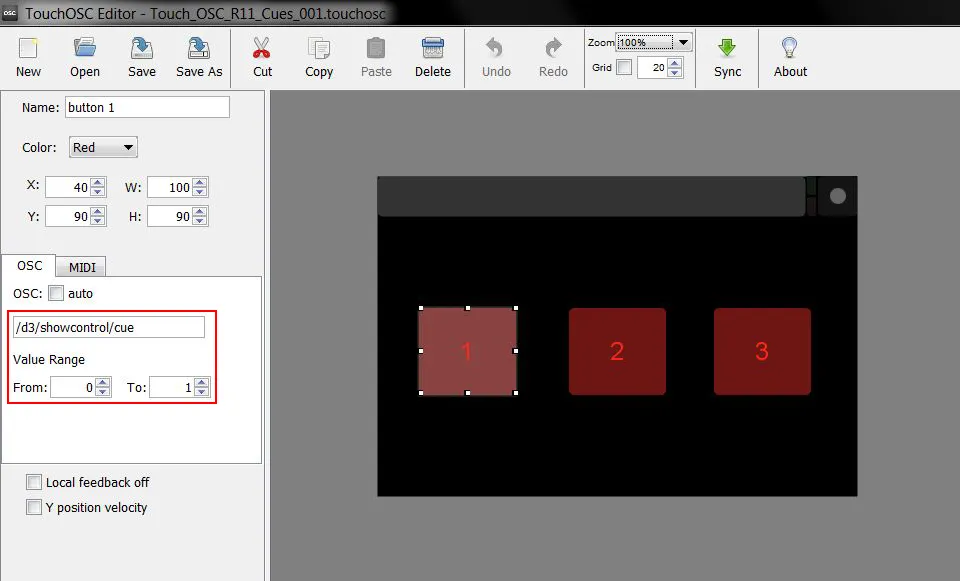OSC Application Templates
Disguise have made two OSC templates available for the iOS applications TouchOSC and Lemur.
To use the template layout first download Lemur from the App Store.
Please see the Lemur support page for how the install the interface.
Download our pre-made Lemur OSC template.
Touch OSC
Section titled “Touch OSC”To use the template layout, first download TouchOSC from the App Store.
Please see TouchOSC support page for how to install the interface.
Download our pre-made Touch OSC template.


See the Resources section for a range of resources including TouchOSC layout and editor.
Example: Building a custom interface to call cues
Section titled “Example: Building a custom interface to call cues”It may be that the show requires a custom interface to call cues, this example calls 3 cues using buttons defined in a Touch OSC project.
Create an OSC interface following the example below, which can be downloaded here. This was created in TouchOSC but any application capable of sending OSC is adequate, for example Lemur.

The OSC layout above shows three buttons each having an assigned string and argument.
String: d3/showcontrol/cue
Arguments:
- button 1 sends a message with float values between 0 and 1,
- button 2 sends a message with float values between 0 and 2 (shown below),
- button 3 sends a message with float values between 0 and 3.

TouchOSC layout with button 2 assigned values 0 and 2 as an argument.
Setup the Timeline to receive incoming OSC messages. Assign cues to the track following a format that matches the argument(s) being received. In the example below, three cues were assigned to a track, each corresponding to a different argument.
- CUE 1 will be triggered by an OSC message sending a single argument value of 1.
- CUE 2 will be triggered by an OSC message sending a single argument value of 2.
- CUE 3 will be triggered by an OSC message sending a single argument value of 3.

Cues assigned to a track on the Timeline following three different formats for receiving three different incoming OSC messages.